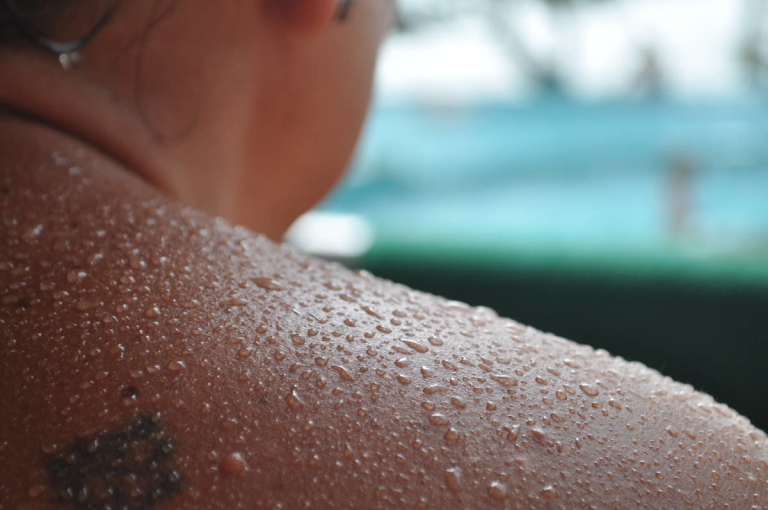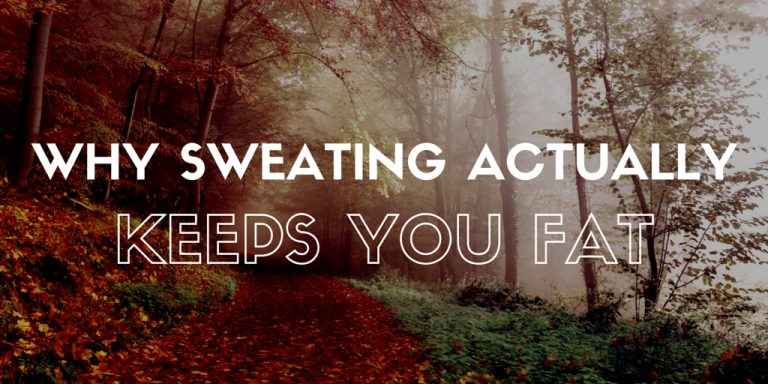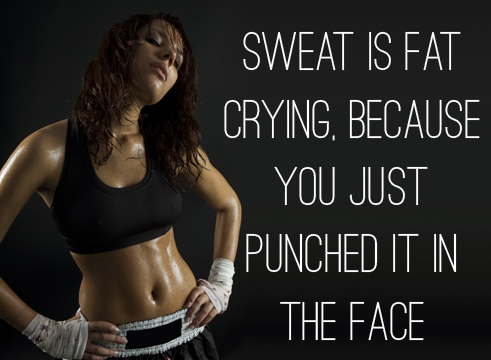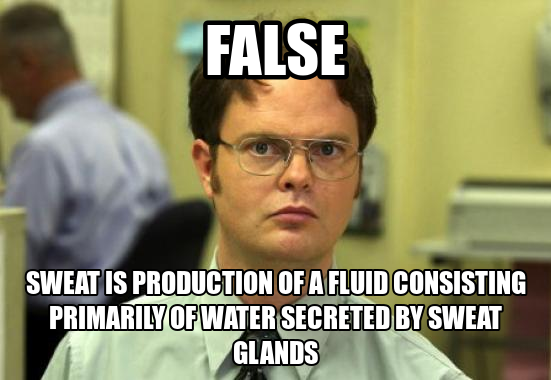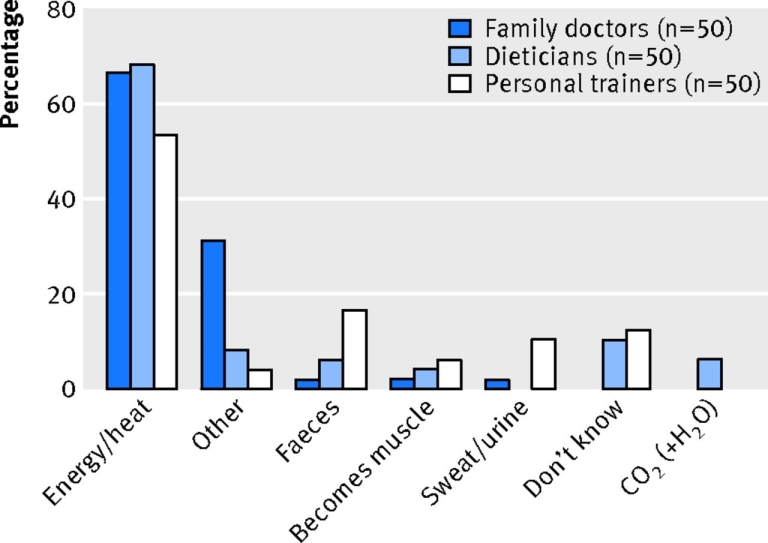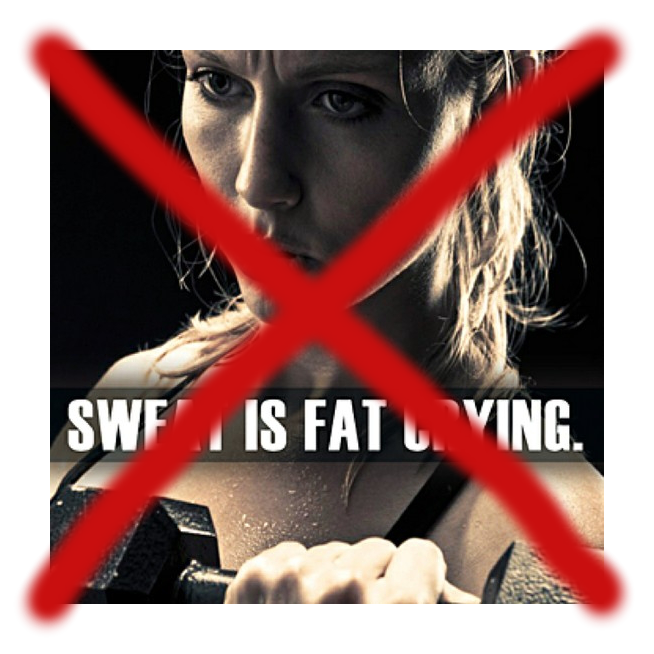Did you know that all that sweating you’ve been doing in the gym has burned ZERO calories? That’s right, that wet badge of honor dripping from your forehead hasn’t helped the way you think.
However, if you’re interested in weight loss then sweating is incredibly effective.
Confused? There’s actually a simple explanation.
As your body warms up, be it from being in a warm climate or through exercise, it’ll want to regulate the temperature so not to overheat. It does so primarily through sweating.
Your millions of sweat glands produce sweat, which is pushed out through your pores. Once out in the open your skin heats the sweat up until it vaporizes, taking part of your heat with it.
This process does require some energy (calories) but it’s so very little it makes no difference.
Just as putting on training clothes before exercising doesn’t make you any fitter and showering afterwards doesn’t grow any muscles, so is sweating completely non-causal to you burning fat. It’s nothing more than a correlation!
And one that’s given rise to quite a pervasive myth.
In fact, according to one survey1 a huge majority of health professionals seems to have no idea what happens to fat (spoiler: correct answer is the far right option).
Sweating off weight #
So if we don’t burn fat how come we lose weight by sweating?
Simple! The sweat you exude and then vaporize is created from water. As your body gets rid of its water your weight naturally drops.
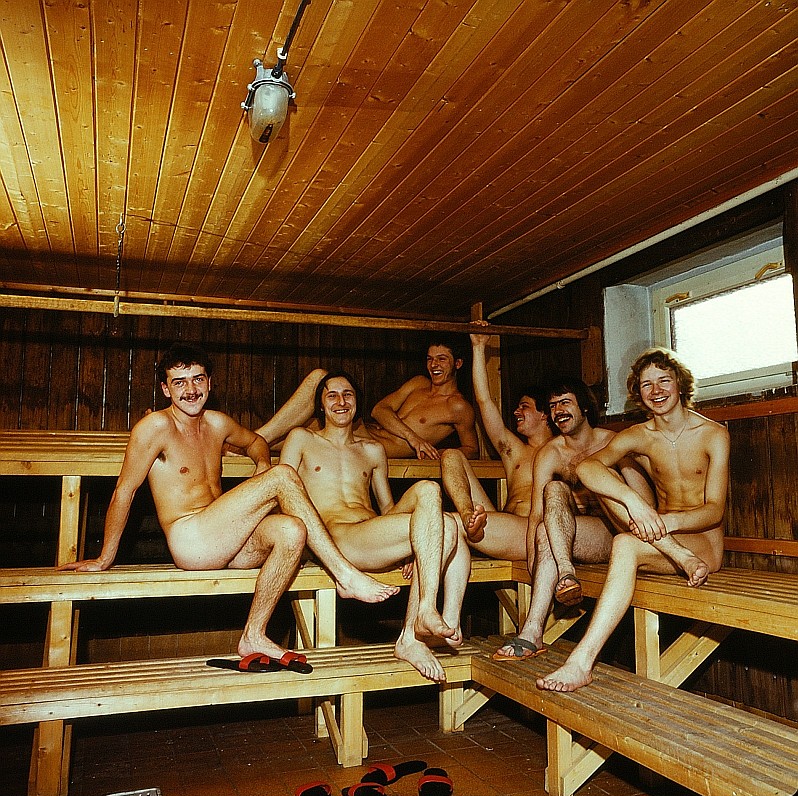
This principle has been used by competing fighters for as long as there’s been weight classes. They spend hours alternating between sauna and treadmill, sweating out several kilos of water before a weigh-in.
Of course, your body will want to rehydrate to function properly and as soon as you refill with water your weight will bounce right back to where it was before.
This is why using the term “weight loss” is problematic – it’s probably not weight people want to lose, but fat.
So how to we achieve that?
Fat oxidation #
Fat is taken off of your “reserves” for a reason – energy consumption. Your body needs fuel.
Whereas modern cars use electricity, lawn mowers gasoline, and trains use steam (work with me here) our bodies’ fuel of choice is called ATP – adenosine triphospate.
This molecule is vital to our survival and your body will keep regenerating it throughout your entire life. In fact, once your muscles are drained of ATP (upon death), that’s when rigor mortis happens.
Your body can regenerate ATP using a few different sources and pathways (including protein). The one we’re interested in for this article is fat, stored as triglycerides in our fat cells.
(I won’t get too nerdy here but if you’re interested, check out the Wikipedia articles on lipolysis for catabolising fats, beta oxidation for oxidating triglycerides, and the Krebs cycle for energy generation.)
The basic science is you breathe in oxygen (O2), which is mixed with your fat (C55H98O6) to form ATP. The major bi-products of this process is carbon dioxide (CO2) and dihydrogen monoxide (H2O).
Dihydrogen monoxide is just a fancy word for water and carbon dioxide is nothing but your smelly breath – the air you exhale.

Your fat basically goes up in the air!
Actually, the way scientists accurately count calories burned involves strapping a mask over the mouth and nose of a subject and measure her exhalation.
According to a study1 by Ruben Meerman and Andrew J Brown, at the University of New South Wales, fat oxidation produces roughly three times as much carbon dioxide than water:
Stoichiometry shows that complete oxidation of 10 kg of human fat requires 29 kg of inhaled oxygen producing 28 kg of CO2 and 11 kg of H2O.
The CO2 is simply exhaled but the H2O is disposed of through urine, faeces, breath, tears and – you guessed it – sweat. Considering how light your exhaled air is compared to water however, you’ll take many, many breaths for every liter of water you sweat.
The vast majority of your fat goes out in exhalation.
Panting fat away #
It’s when you’re gasping for air that your belly really shrinks. But just like with most other things in life, there’s a difference between what’s optimal and what’s maximal.
For maximum fat oxidation there’s a mythical “fat burning zone”. While it does have the highest acute effect it doesn’t mean it’ll help you lose the most amount of fat over time. Still, it’s interesting to see how one study2 at the University of Birmingham showed that:
Maximal rates of fat oxidation have been shown to be reached at intensities between 59% and 64% of maximum oxygen consumption in trained individuals and between 47% and 52% of maximum oxygen consumption in a large sample of the general population.
Maximum oxygen consumption is also known as VO2 max and is a measure of how much oxygen you consume as your exercise gets tougher and tougher.
Basically when your breathing is laboured but you can still have a conversation, that’s the zone where you oxidize the most fat.
If it’s in a tropical jungle you’ll probably be sweating floods, while the same exercise wouldn’t even break a drop if performed in northern Siberia.
Because sweating is completely independent of burning fat.
- “When somebody loses weight, where does the fat go?” http://www.bmj.com/content/349/bmj.g7257↩
- “Optimizing fat oxidation through exercise and diet” http://www.ncbi.nlm.nih.gov/pubmed/15212756↩
